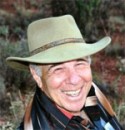“Fool me once, shame on you. Fool me twice, shame on me.”
by Melvyn R. Copen May 7, 2011
 Sedona, AZ (May 10, 2011) – There is an old quote that seems to exist throughout the world’s cultures. It goes: “Fool me once, shame on you. Fool me twice, shame on me.” But how does one extend this “wisdom” to a continuous, non-ending process.
Sedona, AZ (May 10, 2011) – There is an old quote that seems to exist throughout the world’s cultures. It goes: “Fool me once, shame on you. Fool me twice, shame on me.” But how does one extend this “wisdom” to a continuous, non-ending process.
This year, as happens every year at this time, the mails are flooded with corporate annual reports and the accompanying proxy forms and statements. But this year, something is different. Almost all the proxy forms ask shareholders to vote on executive compensation and to indicate how frequently (annually, every other year, etc.) they wish to do so. Sounds great!
We seem to have short memories. It was only a few years ago that the nation was in panic, as financial institutions began to collapse around us – banks, investment firms, insurance companies – many bearing names that had become the “gold standard” in their industry. And amongst all the carnage came the revelation of incredible compensation packages and golden-parachutes that had been doled out to the people who made it all happen. Numerous cases were cited of individuals who received annual paychecks of 8 and even 9 figures.
For once, national outrage expressed itself so strongly, that Congress was forced to take action – but how (and why) do you kill the goose that lays the golden egg? The influence of corporate lobbyists, the enormous amount of campaign funding provided via PACs and other corporate donation vehicles, and the cozy relationship between many in Congress and many in corporate board rooms presented a real dilemma. But good old American ingenuity, as is usually the case, came through.
First, let’s put things in perspective. Perhaps the most difficult job in the United States is that of President. It’s not only difficult, it is dangerous, and security becomes a major element of the services that must be provided. Congress, in its great wisdom, has put a value on this position – a value which it has not seen fit to change since 1999. The President receives a salary of $400,000 per year. In addition, he receives an annual expense account of $50,000, a $100,000 non-taxable travel account and a $19,000 entertainment account (clearly understated due to the various entertainment services provided by the White House and its staff). This is supplemented by fully-staffed living quarters (the White House), a retreat (Camp David) and guest quarters (Blair House). Medical services and the protection of the Secret Service are provided as are three aircraft (2 747’s designated as Air Force 1) and a helicopter (Marine 1). It’s an impressive package, but it is dwarfed by the compensation received by many CEO’s.
Looking at compensation numbers is a somewhat arbitrary process. What are the components that should be counted? However, the exact numbers are not really important – the ballparks into which they fall are. Forbes Magazine came up with an average of $8 million per/year for the CEOs of the 500 largest companies in the US in 2009. An analysis of the individual numbers, shows, in many cases, little connection with performance. The top earner that year received $141 million – FOR A SINGLE YEAR! The AFL-CIO estimated $11.3 million as the average for 2010. A study at UC Santa Cruz, looking at historical data, showed the ration between CEO pay and that of the average manufacturing worker to have risen from 42:1 in 1960 to 344:1 in 2007 (compared to 25:1 in Europe) – a number quite comparable to the union figures.
Now let’s go back to the annual reports and proxy statements. I examined 8 that I received – clearly not a representative sample – but still providing some insights. It was not an easy or a pleasurable task, given the fact that none required reading less than 150 pages, the most significant elements of which were written in gobbledegook.
The first asked me to approve an executive compensation package that paid the CEO just under $8 million, 5 other executives in the $4 million range, and 5 others from $1-2 million, all for a company that only showed a 2% decline in income. The next was more modest – $3.6 million for the CEO and only 1 other executive over a million. The next made me feel better – a financial firm where no one received more than $330,000. But then I hit a major oil company – $29 million for the CEO and a low of $9 million for the other 4 top execs. The next provided its CEO with $3 million. A freight forwarder had 3 in the $1-2 million range. A consumer products company’s top five started with a low of $8.5 and, by the time it reached the CEO, hit $24 million. Finally a paper company provided $17.8 million to its CEO and $4-5 million to 4 other senior executives.
Reacting to the public outcry, in 2010 Congress passed the Dodd-Frank Wall Street
Reform and Consumer Protection Act and in Jan, 2011 the U.S. Securities and Exchange Commission approved final rules implementing provisions of act. This requires that U.S. public companies conduct an advisory vote on executive compensation (note the word “advisory”).
So Congress responded to its constituents in its on inimical political way – by passing legislation which, on the surface, looks like something happened but, which in reality, changes nothing. In essence, it allows for business as usual – and guess what? Things are going just as they did before.
There are several problems with the compensation packages. The obvious one is that the payments are being made at shareholder expense – and often not even associated with performance. But there is another aspect, perhaps even more troubling. We have allowed the creation of a very special economic and social elite – comprised of people responsible for major decisions that affect everyone around them (employees, customers, suppliers) but who are isolated from the environments they influence. Many live in a cocoon that enormous sums of money can provide. They don’t have to hassle with airline bookings or even wait in security lines. They don’t deal with non-existent human-based customer service and they can avoid many of the trials and tribulations that face the average person in the United States. The sad thing is that these are the same people who not only can do something about it, but, perhaps insensitively, are creating many of the frustrations that normal humans have to face.
Most companies justify the high compensation with the argument that they need these levels to attract and retain top performers. But many are not top performers – and with a nation as large as ours, it’s hard to believe that there aren’t a lot of good people out there with the skills to do the job and the willingness to do it at a lot less. And of course, at sky-high hourly compensation rates, a corporate jet or two becomes essential lest they have to wait at airports (despite the “connected” world in which we live).
Another interesting aspect is that most companies set their compensation by looking at “peer groups.” Obviously, unless something happens to change things dramatically, this perpetuates the high numbers. No one likes to be mediocre – i.e. translate that as “in the middle.” So many companies target compensation to be in the 75th percentile. If everyone does that, an interesting mathematical process occurs, particularly as those on the top strive for more and more.
What is reasonable? Do we need regulation? If so, we certainly didn’t get it. Shame on us. But human nature in relationship to greed does not seem to have changed in centuries. If change is going to take place, some type of outside stimulus is needed – and that can only come from government. But even here, to even hope that something positive may happen, something has to change in the halls of Congress. Congress can’t do it – and unless and until the voting public takes a strong stand – it will be more of the same. Einstein is credited with the statement that “insanity is defined as doing the same thing over and over again and expecting different results.” We need to do something different!
© Mel Copen, May, 2011



